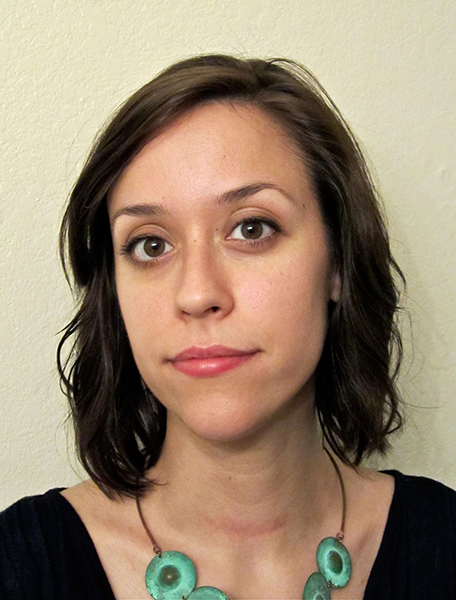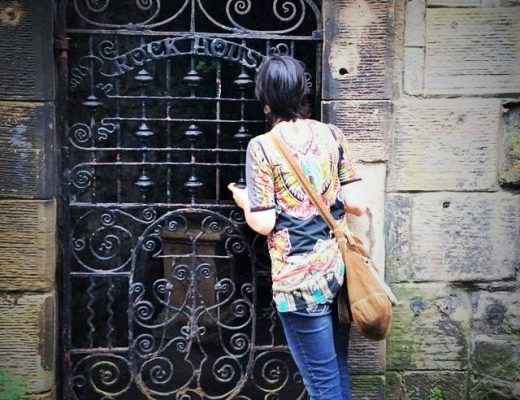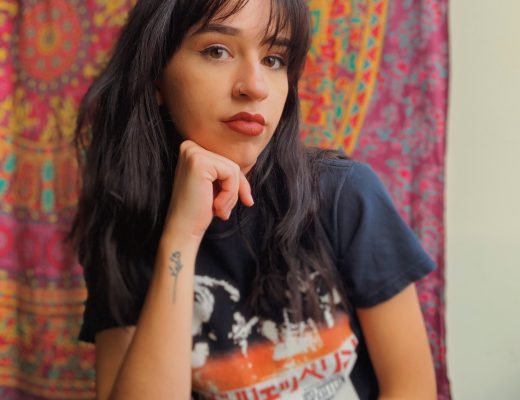Almosts
Salt was what I couldn’t have, so salt was what I wanted. My tongue ached for it. I dreamt of coarse grains between my teeth and woke with my hands to my mouth, the taste almost real. Of course, it wasn’t really the salt I couldn’t have, but what it contained—tiny molecules of iodine stacked two by two, fitted together like barbells. It’s hard to imagine these familiar shapes on a scale so small, contours similar to objects we can grab and hold—but they’re there. Inside one glistening crumb, a world that looks almost like our own.
o—o
In preparation for radioactive iodine treatment, I had to limit my intake of iodine to almost nothing for three weeks—to starve what was left of my cancerous thyroid gland, post-surgery. That way, when I drank the radioactive liquid, my dry, diseased tissue would soak it all up, desperate for iodine, and it would die. The cells would shrink and break apart into debris carried off and processed out of my system. I could have uniodized salt at home, but with no way to know for certain what kind of salt restaurants and manufacturers used, I had to avoid packaged and prepared food—not an easy endeavor for a working college student. I was given a cookbook printed from the Thyroid Cancer Survivors’ Association website. Everything had to be homemade and eaten in specific daily servings—four grains, one meat, one legume, limitless fruits and vegetables, if skinned. No dairy. No fish. No frozen or canned food. To help me start the diet, my mother had come for the weekend with twenty-four individually labeled Tupperware containers full of meals from the cookbook: cranberry-orange muffins, hummus, pesto, beef and potato curry, pork carnitas, pumpkin pancakes, sesame chicken, all in duplicate. They were mostly hopeful versions of normally rich dishes with all the processed ingredients left out—not quite enjoyable, but almost.
o—o
Sublimated to a gas, iodine becomes bright purple, almost magenta—noxious, metallic, diffuse. During my low-iodine diet, rich flavor became an elusive sensation. It hung in the air like a specter over every meal. While working and going to class, I had almost no time cook, so aside from raw fruits and vegetables, I was limited to the meals my mother had brought. The concept of culinary variety simply dissipated. My first night on the diet, I had dinner with my mother and stepfather. We had pesto—my version, and theirs. My bowl was a dull brown, full of homemade whole-wheat noodles speckled with dark green bits. The noodles were bland and tough. Their bowls were all light green, creamy. Mine was cheese-less, of course—just basil, oil, and pine nuts. I had my canister of uniodized salt on the table, and I reached for it over and over. I couldn’t get enough. I poured it from the little metal shoot until I could feel the grains between my teeth with each bite, until my lips puckered and burned. Each bite was just shy of satisfying, a mouthful of almost. I couldn’t take my eyes off their bowls.
o—o
When I sipped the iodine through a straw, it tasted more like nothing than I thought anything ever could. Afterward, the hospital techs carried away the empty lead canister with gloved hands and presented me with a little card for my wallet. It explained that if I set off radiation detectors at airport security checkpoints, it was only because I’d recently undergone this radiation therapy. “Now you can eat whatever you like,” the techs told me. At home, I slept for hours. When I woke, the first thing I wanted was Taco Bell, the saltiest fast food I could think of. I’d lived on it in junior high and high school, but I hadn’t eaten it in years. Still under radiation quarantine, I asked a friend to get the food and leave it on my apartment stoop. Discovering the plastic bag of tacos was not unlike discovering gifts beneath the tree on Christmas morning. As I unwrapped the first greasy taco, I felt almost like a kid again.
o—o
Radioactive iodine, or I-131, is poisonous for most people. It is a product of nuclear fission; it’s fallout. If a healthy body absorbs it through the air, through ground water, through contaminated food, the consequence is often thyroid cancer. Ironic then that I-131 is also a treatment for thyroid cancer—a circular path. Let’s circle back: I lied about the friend who brought me Taco Bell—it was actually an ex-boyfriend; let’s call him O. For years, it had been an explosive—and ultimately disastrous—relationship, and I’d left him just before my diagnosis, convinced it was finally final. The fallout from our split was toxic—tears, harassment, a desperate break-in. Yet, six months later, I found myself hovering over O’s name on my phone. By the time he brought me the salty goods, we’d been in hesitant contact for a few weeks. The iodine in my body had a half-life of about eight days. After three days, I could be around other people for extended periods of time without posing a threat to their thyroid glands—but I had to wait a week before I could touch them. When O came to visit me during the latter half of my quarantine, it was a practice in abstinence, just as the diet had been. We could almost touch. We were almost back together, almost us again. Eventually, we did become our old selves. Over the next year, ambivalence permeated our skin and filled our bodies until it consumed us from within. We tried to hold together, but the relationship slowly decayed.
o—o
After the radioactive iodine treatment, the doctors hoped a blood test would show that there was no thyroid tissue left in my body—and thus no disease. It didn’t. What it revealed was a small amount of lingering tissue, unable to be located on scans—a little phantom node that would haunt my blood tests for the foreseeable future. The cancer had a penchant for wandering—it had previously spread into my lymph nodes, calling for a second surgery, so it was important not to let this last little scrap go. Almost would become an important word over the next several years—almost all of the diseased tissue would be gone, the next treatment would almost certainly work, the surgical scar on my neck would be almost invisible, everything would be almost back to normal soon. When people hear that I’ve had cancer, they sometimes say: “But it’s all gone now, right?” Then the never-ending debate in my mind: should I say yes, all—or most? Should I affirm their hope or their worry—or both? Most of the time, I just tell them almost.
Rochelle Hurt is the author of The Rusted City, a collection of prose poetry and verse published in the Marie Alexander Series from White Pine Press (2014). Her work has been included in Best New Poets 2013 and listed as notable in Best American Essays 2013. She’s been awarded literary prizes from Crab Orchard Review, Arts & Letters, Hunger Mountain, and Poetry International. Her poetry, fiction, and nonfiction have appeared in journals like Crazyhorse, Mid-American Review, The Southeast Review, and Image. She holds an MFA from UNC Wilmington and is currently a PhD student at the University of Cincinnati, where she serves as Assistant Editor for the Cincinnati Review.



